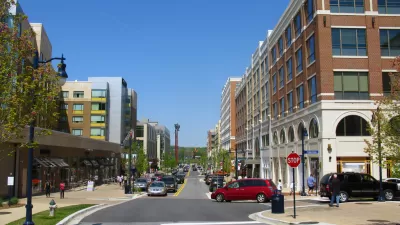An MIT study determined that traffic lights, and their inefficiencies, could be eliminated if all vehicles were equipped to regulate their speed and "batch" together as they approach intersections.

Less a fully autonomous system than an extension of cruise control, the slot-based network could take away the need to wait at traffic lights. "The basic idea is that actors in a system are grouped into batches, and the speed of their movement is carefully controlled to move them more efficiently through a space."
Carlo Ratti and Paolo Santi of MIT have released a study that examines how cars could communicate to navigate intersections without coming to a stop. The system relies on sensors that relay a vehicle's trajectory to a central computer, which can then control that vehicle's speed and group it with other cars before arriving in the intersection.
Essentially, writes Kelsey Campbell-Dollaghan, "What Santi and Ratti are proposing is a super-intelligent piece of software that could take the basic model of a stoplight—cycling between stop and go—and speed it up," so that all vehicles continue through the intersections at slow but steady speeds.
Of course, the article notes, slot-based design has to contend with the same barrier autonomous vehicles face: a human unwillingness to give up control.
FULL STORY: MIT's Not-So-Crazy Plan To Get Rid Of Stoplights

Planetizen Federal Action Tracker
A weekly monitor of how Trump’s orders and actions are impacting planners and planning in America.

San Francisco's School District Spent $105M To Build Affordable Housing for Teachers — And That's Just the Beginning
SFUSD joins a growing list of school districts using their land holdings to address housing affordability challenges faced by their own employees.

The Tiny, Adorable $7,000 Car Turning Japan Onto EVs
The single seat Mibot charges from a regular plug as quickly as an iPad, and is about half the price of an average EV.

With Protected Lanes, 460% More People Commute by Bike
For those needing more ammo, more data proving what we already knew is here.

In More Metros Than You’d Think, Suburbs are Now More Expensive Than the City
If you're moving to the burbs to save on square footage, data shows you should think again.

The States Losing Rural Delivery Rooms at an Alarming Pace
In some states, as few as 9% of rural hospitals still deliver babies. As a result, rising pre-term births, no adequate pre-term care and "harrowing" close calls are a growing reality.
Urban Design for Planners 1: Software Tools
This six-course series explores essential urban design concepts using open source software and equips planners with the tools they need to participate fully in the urban design process.
Planning for Universal Design
Learn the tools for implementing Universal Design in planning regulations.
Smith Gee Studio
City of Charlotte
City of Camden Redevelopment Agency
City of Astoria
Transportation Research & Education Center (TREC) at Portland State University
US High Speed Rail Association
City of Camden Redevelopment Agency
Municipality of Princeton (NJ)





























